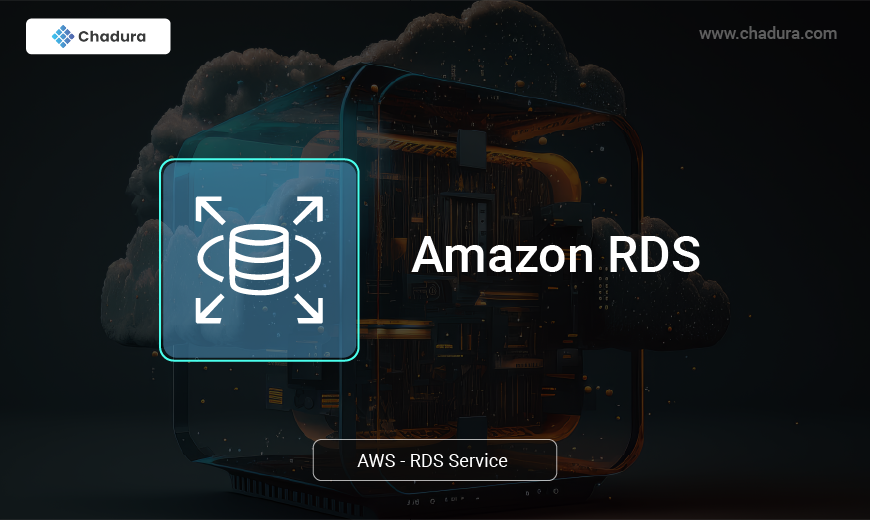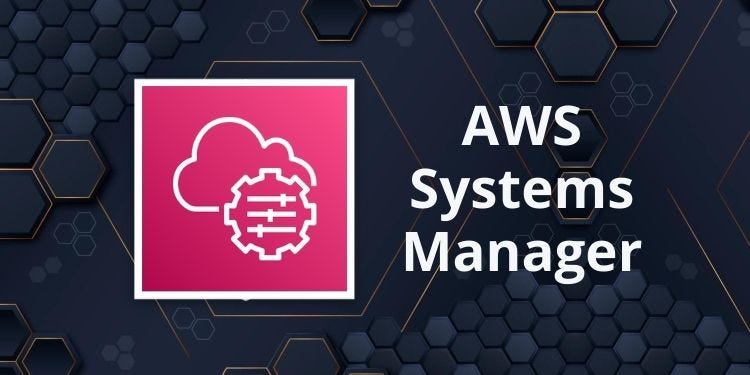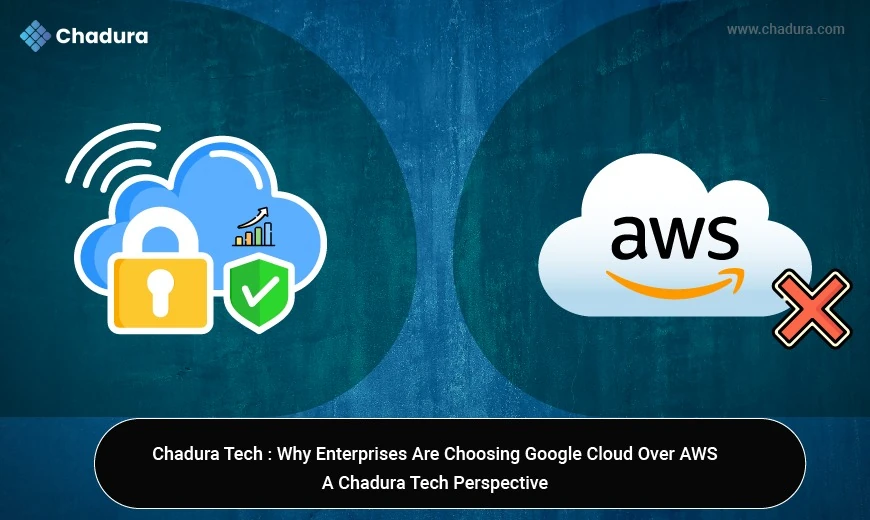Amazon RDS (Relational Database Service)
Amazon RDS (Relational Database Service) is a managed cloud database service provided by AWS that is intended to make database administration activities like setup, scaling, patching, and backups easier. It provides support for various database engines like MySQL, PostgreSQL, MariaDB, Oracle, SQL Server, and Amazon Aurora.
With RDS, users can deploy highly available and scalable databases without having to manage the infrastructure. It includes automated backups, multi-AZ deployments for high availability, read replicas for optimization of performance, and strong security features such as encryption, IAM authentication, and VPC-based network isolation. RDS allows organizations to concentrate on application development with AWS taking care of maintenance and scaling. It is perfect for web applications, data analytics, and enterprise applications that need an efficient, secure, and manageable database infrastructure.
Features of Amazon RDS
Amazon RDS (Relational Database Service) offers a range of features that simplify database management while ensuring high availability, security, and scalability. Here are the key features:
1. Automated Database Management
2. Multi-AZ (Availability Zone) Deployments for High Availability
3. Read Replicas for Scalability
4. Automated Backups and Snapshots
5. Security and Compliance
6. Performance Optimization
7. Flexible Scalability
8. Database Engine Support
Amazon RDS supports multiple relational database engines:
- Amazon Aurora (MySQL & PostgreSQL compatible)
- MySQL
- PostgreSQL
- MariaDB
- Oracle Database
- Microsoft SQL Server
9. Monitoring and Logging
- CloudWatch Metrics: Monitor CPU usage, memory, disk space, and connection count.
- Enhanced Monitoring: Provides real-time operating system metrics.
- AWS CloudTrail: Logs all API requests for auditing.
10. Pay-as-You-Go Pricing
Database Engine Options in RDS
Selecting the appropriate database engine in AWS RDS is important to the performance and functionality of your application. Its engines are popular ones such as MySQL, PostgreSQL, Oracle, SQL Server, and Amazon Aurora, each with its strengths. Apply these considerations in your selection.
Performance and Scalability: Assess your application's performance needs. Take into account transaction throughput, write and read operations, and response time. Both MySQL and PostgreSQL are well-known for their performance and scalability and thus are ideal for high-traffic applications. Amazon Aurora, being MySQL and PostgreSQL compatible, provides improved performance and scalability through its new replication and storage architecture.
Features and Functionality: Describe the particular features and functionality offered by each database engine. MySQL is widely praised for being easy to use, having excellent community support, and supporting many applications. PostgreSQL provides features like JSON support, full-text search, and strong transaction control. Oracle and SQL Server are appropriate for enterprises that need full enterprise-class features like advanced analytics, security, and high availability features.
Application Compatibility: Consider the database engine's compatibility with existing applications and frameworks. If you have applications developed with MySQL or PostgreSQL, it will be simple to stick with the same engine for smooth migration and minimum development effort. AWS RDS has tools and resources available to simplify the database migration between engines, so you can switch engines if you need to.
Vendor Lock-In and Portability: Assess the vendor lock-in and portability issues of the database engine. AWS RDS offers managed versions of widely used open-source engines such as MySQL and PostgreSQL, which enable you to move your databases to self-managed environments or other cloud providers if needed. If you may need portability and flexibility in the future, an open-source engine might be an appropriate choice.
Licensing and Cost: The needs and costs of licensing the database engine should be considered. Oracle and SQL Server are regarded as commercial database engines, which have additional licensing fees, whereas MySQL and PostgreSQL are open-source and hence typically have lower costs of licensing. AWS RDS supports both licensed and open-source engines and hence enables you to choose the engine that is appropriate according to your budget and licensing needs.
Difference between Multi-AZ and Read Replicas in Amazon RDS
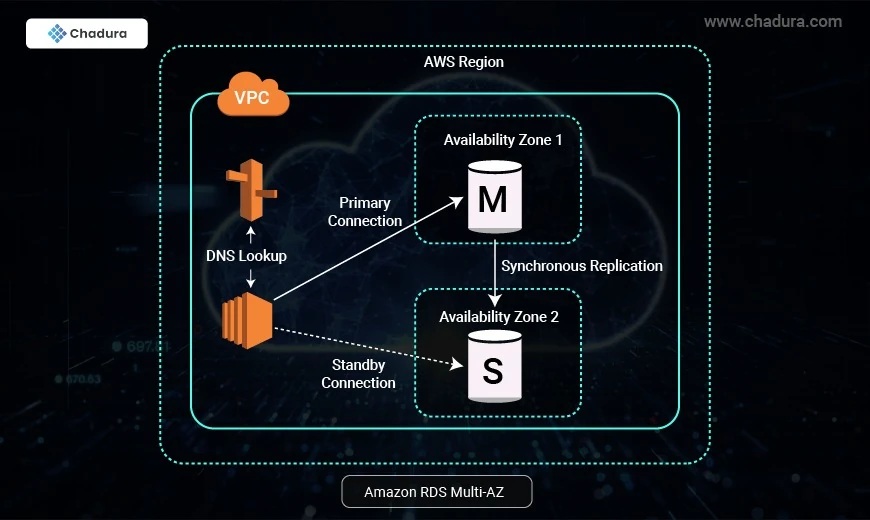
Amazon RDS Multi-AZ and Read Replicas maintain a copy of database but they are different in nature. Use Multi-AZ deployments for High Availability/Failover and Read Replicas for read scalability.
Amazon RDS Multi-AZ deployments provide enhanced availability for database instances within a single AWS Region. With Multi-AZ, your data is synchronously replicated to a standby instance in a different AZ.
In the event of an infrastructure failure, Amazon RDS performs an automatic failover to the standby, minimizing disruption to your applications without administrative intervention.
Benefits of Multi-AZ deployment:
- Replication to a standby replica is synchronous, which is highly durable.
- The endpoint of the DB instance remains the same after a failover; the application can resume database operations without manual intervention.
- If a failure occurs, your availability impact is limited to the time that automatic failover takes to complete. This helps to achieve increased availability.
- It reduces the impact of maintenance. RDS performs maintenance on the standby first, promotes the standby to primary master, and then performs maintenance on the old master, which is now a standby replica.
- To prevent any negative impact of the backup process on performance, Amazon RDS creates a backup from the standby replica.
- When a problem is detected on the primary instance, it will automatically failover to the standby in the following conditions: 1) The primary DB instance fails. 2) An Availability Zone outage. 3) The DB instance server type is changed. 4) The operating system of the DB instance is undergoing software patching. 5) Manual failover of the DB instance was initiated using reboot with failover.
Amazon RDS Read Replicas
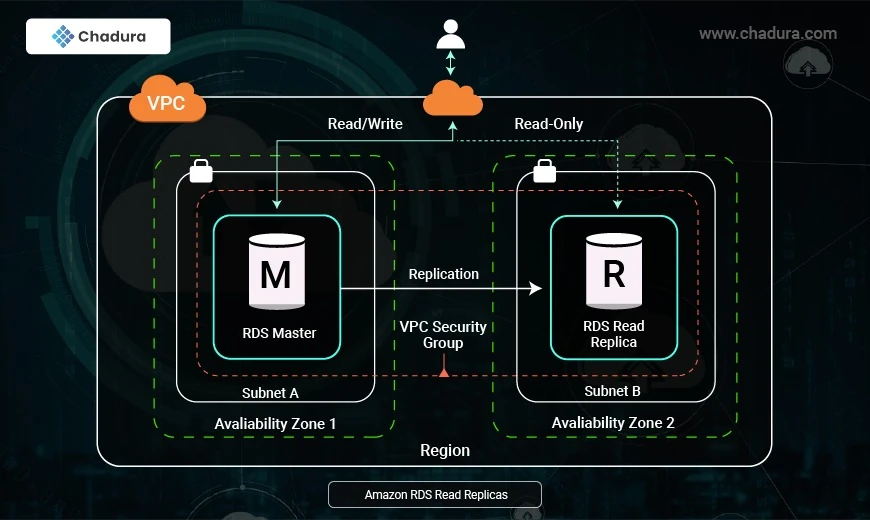
Amazon RDS Read Replicas enable you to create one or more read-only copies of your database instance within the same AWS Region or in a different AWS Region to increase the scalability.
Updates made to the source database are then asynchronously copied to read replicas. Writes can happen in the main database only, and reads can happen in the read replica database.
When you create a Read Replica, you first specify an existing DB instance as the source. Then Amazon RDS takes a snapshot of the source instance and creates a read-only instance from the snapshot. The source DB must have automatic backups enabled for setting up a read replica.
Benefits of Read Replicas
- Read Replicas helps in decreasing load on the primary DB by serving read-only traffic.
- You can create Read Replicas within AZ, Cross-AZ, or Cross-Region.
- Read Replica can be manually promoted as a standalone database instance.
- Read Replicas support Multi-AZ deployments.
- You can use Read Replicas to take logical backups if you want to store the backups externally to RDS.
- You can have Read Replicas of Read Replicas.
- Read Replica helps to maintain a copy of databases in a different region for disaster recovery.
- You can have up to five Read Replicas per master, each with its own DNS endpoint. Unlike a Multi-AZ standby replica, you can connect to each Read Replica and use them for read scaling.
Read Replicas Use Cases
- Business reporting or data warehousing scenarios where you might want business reporting queries to run against a read replica rather than your production DB instance.
- Implementing disaster recovery. You can promote a read replica to a standalone instance as a disaster recovery solution if the primary DB instance fails.
- Scaling beyond the compute or I/O capacity of a single DB instance for read-heavy database workloads. You can direct this excess read traffic to one or more read replicas.
- Serving read traffic while the source DB instance is unavailable. In some cases, the source DB instance might not be able to take I/O requests, for example, due to I/O suspension for backups or scheduled maintenance. In these cases, you can direct read traffic to your read replicas.
Conclusion
Amazon RDS simplifies database management, making it an ideal choice for businesses that require a secure, scalable, high-performance, and cost-effective solution. With automation, reliability, and built-in security, AWS RDS allows companies to focus on their core applications rather than database administration


